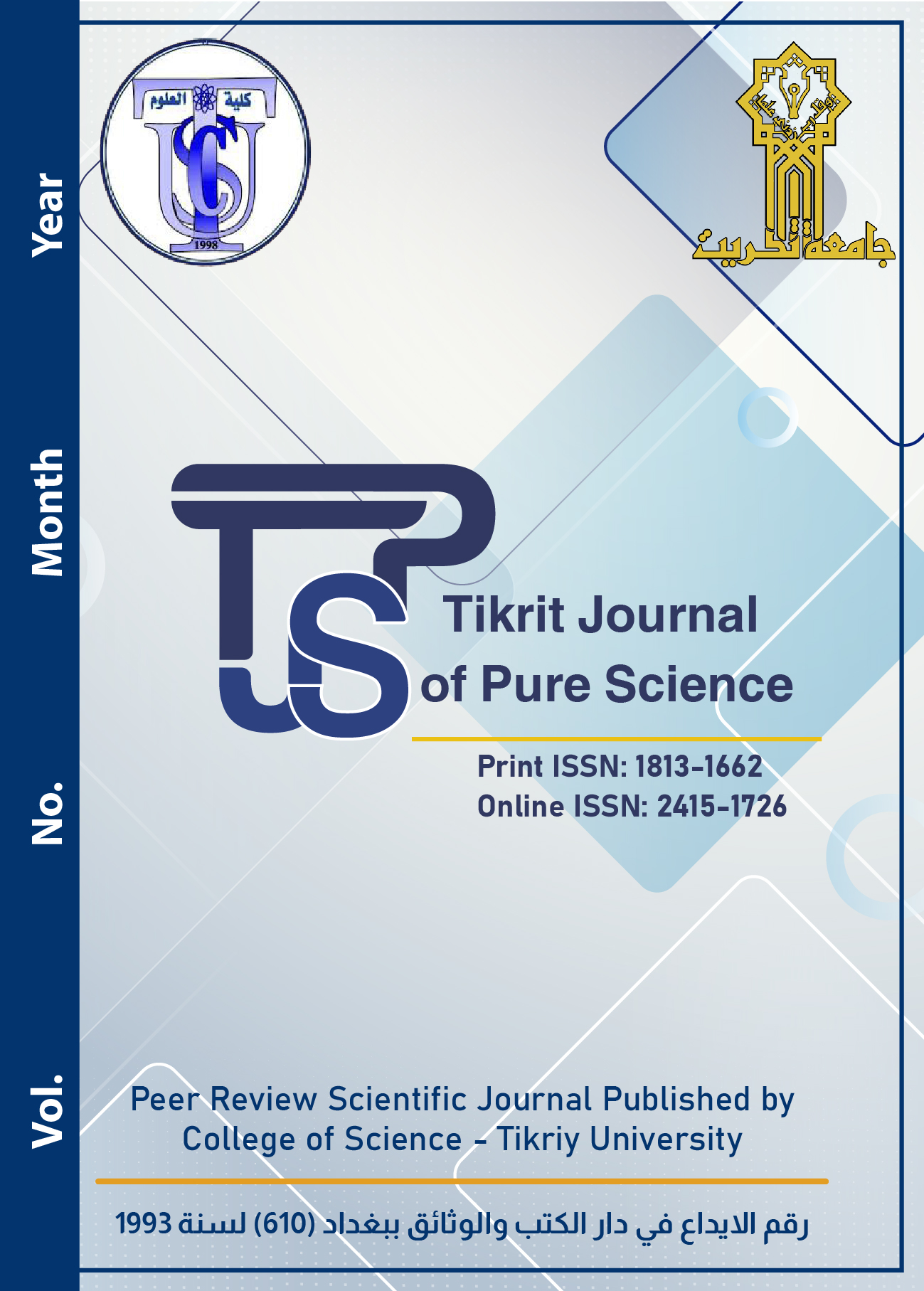Abstract
Amoebic dysentery is a frequent infectious disease that is acquired by contaminated food and water carrying the infective stage of the parasite. Entamoeba histolytica is a parasite that has spread internationally as a generating growing illness and death in underdeveloped nations. The disease is considered more frequent in conditions were insufficient cleanliness and congested population is present. Although the first diagnostic methods of the parasite in infected patient is microscopy, it is not feasible to depend on this approach since it is not able to discriminate between amoebic forms that imitate this parasite. Thus, the requirement for a more advanced approach to offer accurate diagnosis of the parasite is important to represent the genuine frequency of the parasite. The present research includes the assessment of (220) fecal samples from children under (15 years) over the period of 1st December 2023 to 1st of February 2024. It involves microscopic inspection of fecal samples confirmation of diagnosis with two distinct Enzyme Linked Immunosorbent Assay test (ELISA) that catch E. histolytica/disbar and E. histolytica alone. Also, microscopic positive samples were submitted to nucleic acid identification of E. histolytic by Real Time-Polymerase Chain Reaction (RT-PCR) The findings indicated that the proportion of microscopic positive samples were 93(42.27 %), with males representing (68.82 %) and females by (32.18 %). The most afflicted age group was between (1-5 years) with an infectivity rate (47.31 %). Most of the patients with amoebic dysentery (66.67 %) were dwelling in urban areas, while (33.33 %) were from rural areas. Regarding E. Histolytica /dispar stool antigen ELISA, this test was positive in (63.44 %) of a total of (93) microscopy positive specimens with sensitivity and specificity of (73.17 %) and (96.42 %) correspondingly. On the other hand, E. Histolytica specific ELISA test was positive in (25.81 %) out of (93) microscopy positive fecal samples with a sensitivity and specificity of (69.28 %) and (97.91 %), respectively. As far as RT-PCR is involved, E. histolytica nucleic acid was positive in (20.44 %) out of (93) microscopy positive fecal samples. In conclusion, microscopy positive Entamoeba complex is a crude mean of detection of Entamoeba complex and diagnosis and should always be validated using better means like ELISA or PCR.
Keywords
ELISA
Entamoeba histolytica
PCR
Stool samples
Abstract
الزحار الأميبي هو مرض معد شائع تتم الإصابة به من خلال تناول الأغذية والمياه الملوثة التي تؤوي الطور المعدي للطفيلي. المتحولة الحالة للنسيج (Entamoeba histolytica) هو طفيلي منتشر على مستوى العالم ويسبب زيادة معدلات الإصابة بالأمراض والوفيات في البلدان النامية، كما ان عوامل سوء النظافة والكثافة السكانية العالية تزيد من انتشار المرض وصعوبة السيطرة عليه. على الرغم من أن طريقة التشخيص الأولية للطفيل لدى المريض المصاب هي الفحص المجهري، إلا أنه لا يمكن الاعتماد على هذه الطريقة حيث صعوبة التمييز بين الشكل الأميبي الذي يحاكي هذا الطفيل وبالتالي، فإن الحاجة إلى طريقة أكثر تقدمًا لتوفير تشخيص دقيق للطفيلي أمر ضروري لتعكس الانتشار الحقيقي للطفيلي. تضمنت الدراسة الحالية فحص (220) عينة براز من أطفال تقل أعمارهم عن (15 عامًا) خلال الفترة من 1 ديسمبر 2023 حتى 1 فبراير 2024. تضمن الفحص المجهري اختبارين باستخدام تقينة ELISA لعينات البراز تأكيد تشخيص أصابتهم بـ E. histolytic/disbar و E. histolytic alone. تم تقديم عينات مجهرية إيجابية للكشف عن الحمض النووي لطفيلي E. histolytic عبر Real Time PCR. أظهرت البيانات أن نسبة العينات الإيجابية المجهرية بلغت 93(42.27 %) بنسبة ذكور (68.82 %) والإناث (32.18 %). وكانت الفئة العمرية الأكثر تأثراً هي الأطفال ما بين 1-5 سنوات، وبلغت نسبة الإصابة بالمرض (47.31 %) معظم المرضى الذين يعانون من الزحار الأميبي (66.67 %) يقيمون في المناطق الحضرية (33.33 %) كانوا من المناطق النائية. فيما يتعلق بـ E. Histolytica/مستضد البراز المتباين ELISA كان هذا الاختبار إيجابيا في(63.44 %) من إجمالي (93) عينة مجهرية إيجابية مع حساسية ونوعية (73.17 %) و(96.42 %) على التوالي. من ناحية أخرى، كانت مقايسة ELISA النوعية لـ E. Histolytica إيجابية في (25.81 %) من أصل (93) عينة برازية إيجابية مع حساسية ونوعية(69.28 %) و(97.91 %) على التوالي. بقدر ما يتعلق الأمر بـ RT-PCR، كان الحمض النووي لطفيلي E. Histolytica إيجابيًا في(20.44 %) من أصل (93) عينة برازية إيجابية. في الختام، فإن الفحص المجهري الإيجابي لمركب المتحولة هو وسيلة بدائية للكشف عن مركب المتحولة ويجب تأكيد التشخيص دائمًا باستخدام طريقة متفوقة مثل ELISA أو PCR .
